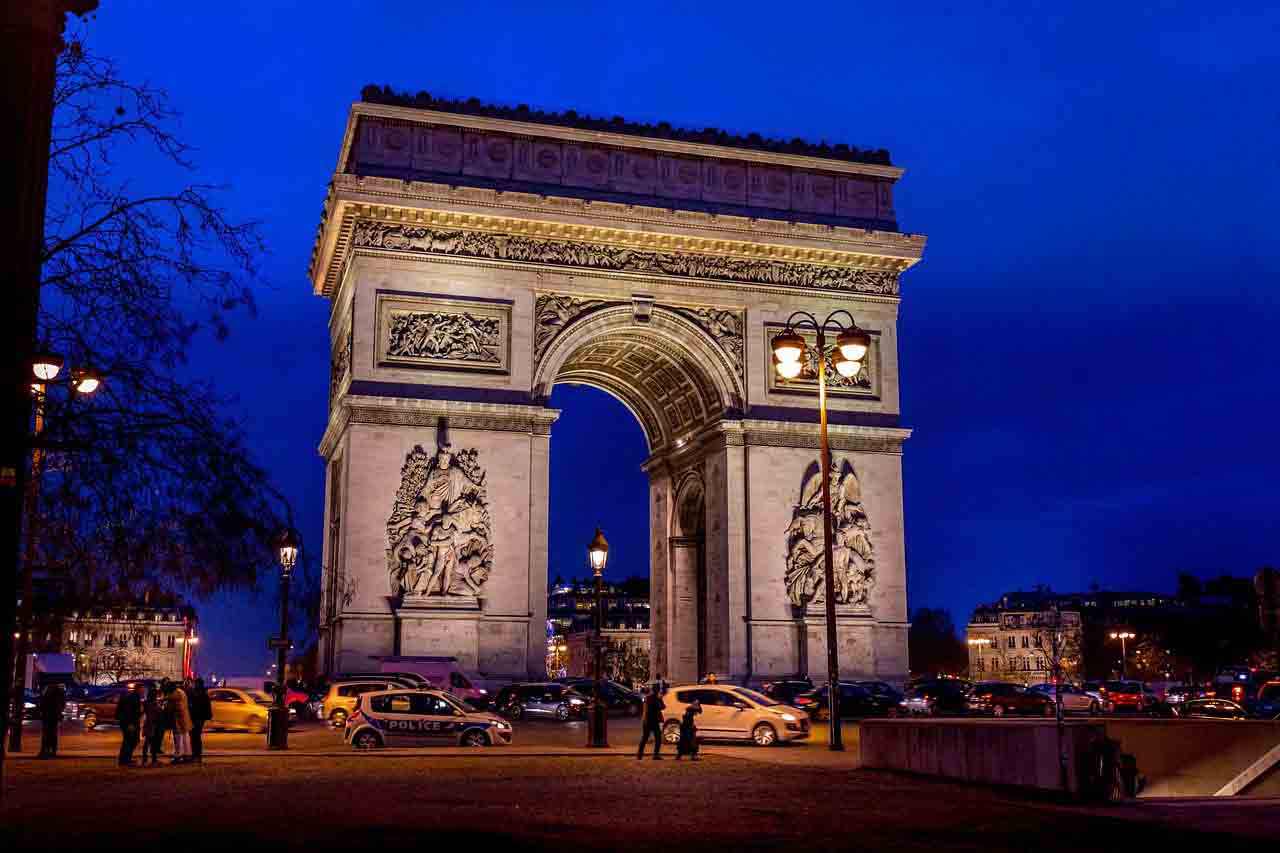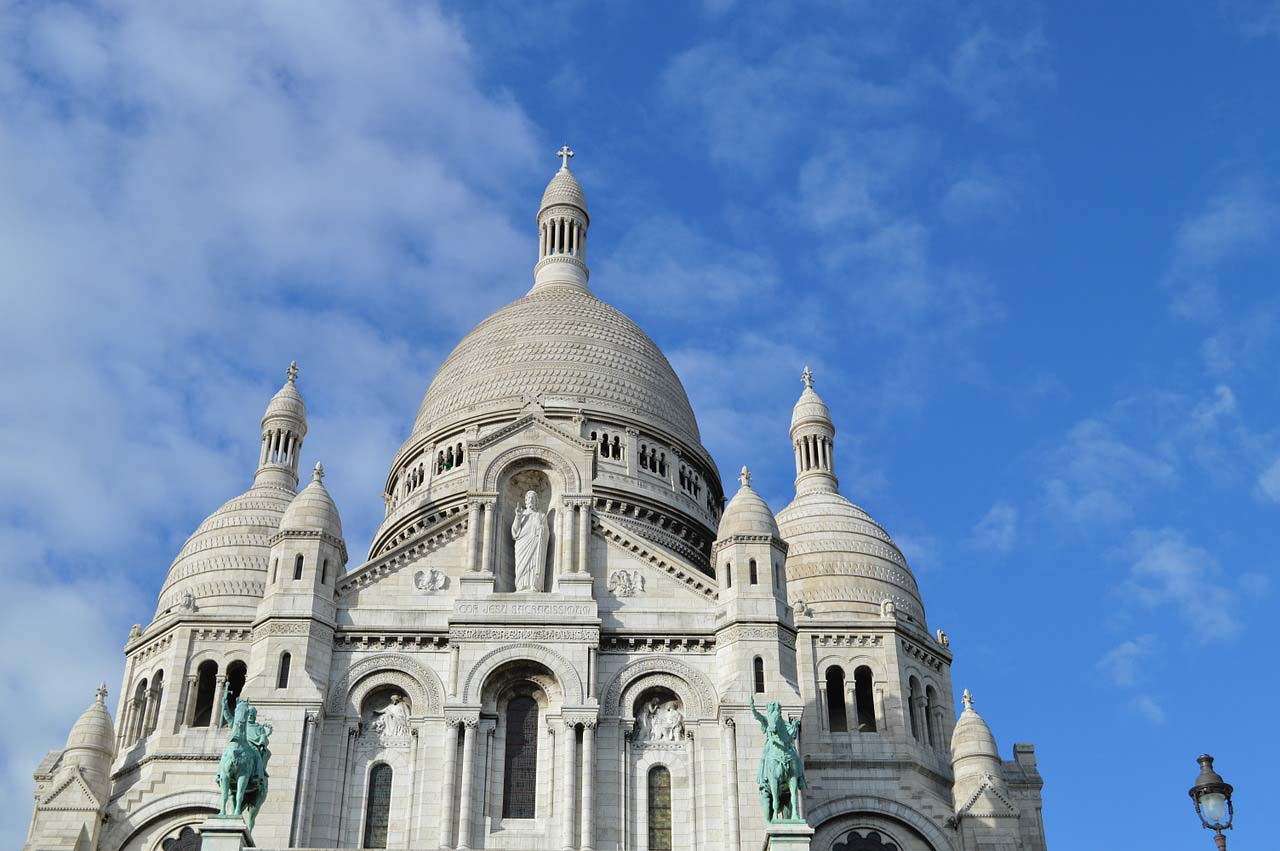No visit to Paris, short or long, can be separated from Champs Elysees e the Arc de Triomphe; as the city is rich in monuments and beauties without equal. Montmartre instead, the artists’ quarter, is one of the few that has managed to keep its identity intact over the centuries.
THE TRIUMPHANT WAY AND MONTMARTRE
The Triumphant way and Montmartre, are two itineraries to follow during your holiday. For the first route, which runs along the large boulevard from the gardens to the Arc de Triomphe, it takes from 2 to 4 hours depending on whether or not you want to visit the museums. Over a couple of hours, on the other hand, they are used for the other proposed itinerary.
Coming down from the metro, at the stop Champs-Elysées-Clemenceau, you can enter directly into the sumptuous Jardins, where today as yesterday, the Parisians stroll among the tree-lined avenues and crowd the terraces of the ancient cafes. This is the ideal place to relax, especially after days of great treks to visit the city. The area is located in this area Small and the Grand Palais.
The Petit Palais is an exhibition pavilion, now a museum, built for the 1900 Universal Exhibition, designed by the French architect Charles Girault. It has been classified as an historic monument. Built together with the Grand Palais, located just next door, it now houses the Museum of Fine Arts of the city of Paris (Musée des beaux-arts de la Ville de Paris).
It is open every day from 10 to 18. Closed on Monday. On Friday, in general, the closure is postponed to 21:00 for temporary exhibitions. Generally, for temporary exhibitions you have to buy an additional ticket, or the cumulative ticket.
For practical information and news about the collections, you can consult the official website.
The Grand Palais, by the severe and imposing neoclassical forms, was built by the architects Deglane, Louvet and Thomas always on the occasion of the 900 Universal Exhibition. The exterior of the structure of the large glass exhibition pavilion combines an imposing stone façade of classical inspiration, with Art Nouveau fences and allegorical statues by Paul Gasq and Alfred Boucher. Note that the building has been closed for twelve years for a radical restoration after the fall of a glass panel from the roof in the 1993. He reopened the 24 September 2005. For info and timetables consult the official website.
The first part of the Triumphant way and Montmartre itinerary continues along the mythical Avenue des Champs Élysées to the Arch that stands out in front. The Champs Elysees are the Parisian street of excellence, with restaurants, cafes, luxurious windows of Louis Vuitton, Chanel, Gaultier or big hotel names like Marriott. It is here that there is a large part of the Parisian nightlife, among the various places on the Via. And it is always here that the main events are held, such as the Parade of the 14 July, the celebrations of the New Year and, again, the final stage of the Tour De France.
In Place de l’Etoile, is located l‘Arc de Triomphe, the large arch that dominates the square, built between the 1806 and the 1836. Inside there is a museum that traces the whole history of this monument. Going up to the terrace, you can admire a beautiful panorama. The Arc is open every day from 10to 23:00 (winter closing is scheduled for and 22: 30) and the cost for the ticket is 8,00€.
If the tour of the Triumphant way and Montmartre should be covered in the same day, it is advisable to pause for lunch. A bistro would be ideal. After having resumed the energies, we start again. From the Metro/RER stop Charles De Gaulle-Etoile it comes up to Pigalle, district up to twenty years ago infamous, and now completely “cleaned up”, so as to become a real tourist place.
Pigalle is the red light district, the area where there are bars and trendy clubs such as Le Cigale and, above all, the famous Moulin Rouge. If you have the chance, try to book for a really fun evening. In the area there are also numerous sexy-shops and a museum of eroticism: a seven-storey building entirely dedicated to erotic art; in the basement there is a very special collection of erotic machines!
After passing the Moulin Rouge, the perpendicular Boulevard de Clichy leads to Cemetery of Montmartre. Here, numerous important names can be read on the gravestones; Berlioz, Offenbach, Stendhal, Emile Zola, Degas, Francois Truffaut, just to name a few. The Parisians call this steep hill, “La Butte”. In this area, despite the massive presence of tourists, it is still possible to walk through narrow streets and quiet squares that have maintained a village atmosphere.
If you are a fan of Impressionist painting, you can not help but take a walk in Rue St Rustique; It is famous for being frequented by the likes of Renoir, Monet, Césanne, Pisarro and Van Gogh. At the 18 number, a memorial plaque signals the restaurant “A la Bonne Franquette”, where the various artists used to dine.
The district of Montmartre it is literally stormed by tourists and, therefore, full of souvenir shops and cafes; choose to walk along Rue Lepic, the road that leads up to the hill and still retains the tranquility and charm of the past.
The view of the imposing white mass of the Sacré Coeur is something indescribable, exciting, as the panoramic view of the city from the 270 meters of its hill. The Basilica has been entirely built with the limestone of Château-Landon, whose characteristic, besides the very white color, is not to retain dust and smog. So, after every rain, it’s even brighter! In neo-Byzantine style, it was built in the 1873 and completed in the 1914. The Basilica can be visited daily from 08:30 to 20:00 in summer, and from 09:00 to 17:00 in winter. Not to be missed during your itinerary on the Via Trionfale and Montmartre. For more information you can consult the official website.




